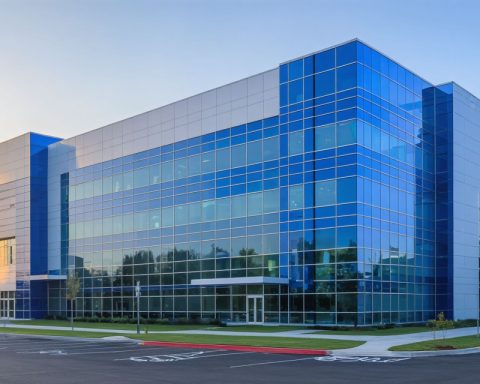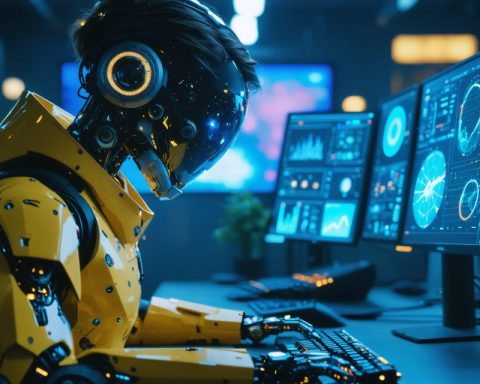XPeng’s New Ambition: A Revolutionary Humanoid Robot Unveiled
In a surprising shift from electric vehicles, XPeng has dived into the world of humanoid robotics with its latest creation, “Iron.” This company, typically known for its advancements in the flying car industry, especially with the X2 model recently seen in Shanghai, is now making headlines with its foray into robotics.
Introducing Iron: The Human-Like Robot
Iron is an ambitious project that has been five years in the making. Standing at 5’11” and weighing 154 pounds, this robot is not only engineered to mimic human appearance but also human movement, boasting a staggering 60 joints with over 200 degrees of freedom. The functionality of its hands, designed with intricate detail, is one of its standout features, capable of performing complex tasks.
From Factory Floors to the Future
Already, Iron is being utilized in real-world settings such as factories, marking a significant milestone in its development. This practical application demonstrates XPeng’s commitment to integrating cutting-edge robotics into everyday environments.
The Battle with Tesla’s Optimus
While XPeng’s Iron is poised to shake up the robotics market, it faces stiff competition from Tesla’s humanoid, Optimus. Debuted in 2022, Optimus is expected to enter low production soon, with future plans for broader application by 2026. As the competition heats up, the next few years will undoubtedly see a surge in advanced humanoid robots, each pushing the boundaries of technology and human-machine interaction.
In this emerging race, XPeng’s Iron represents more than just innovation; it is a bold step towards a robotic future.
Incredible Insights into the World of Humanoid Robots
The unveiling of XPeng’s humanoid robot, “Iron,” marks an exciting leap in robotics, showcasing technological marvels that are no longer confined to science fiction. As humanoid robots steadily make their way into mainstream use, here’s a deeper dive into tips, life hacks, and intriguing facts about navigating this revolutionary world.
1. Understanding the Mechanics Behind Humanoid Robots
Grasping the fundamentals of robotics can enhance appreciation and interaction with these machines. Humanoid robots like Iron are designed to replicate human motion through complex systems comprising joints and sensors. With 60 joints and over 200 degrees of freedom, such robots exhibit fluid movements, allowing for natural and efficient task execution. For those interested in the mechanical workings, familiarize yourself with terms like actuators, servos, and feedback systems, which play crucial roles in a robot’s movement.
2. Life Hacks for Integrating Robots into Daily Life
While humanoid robots are gaining traction in industrial settings, they are also poised to enter homes soon. Consider potential applications for simplifying daily tasks, such as:
– Automated Cooking: Use robots equipped with precision hands for meal preparation.
– Domestic Assistance: Assign mundane chores like cleaning or laundry to your humanoid helper.
– Companion and Caregiver: Robots can offer simple companionship, monitor well-being, and assist the elderly.
To make the most of these capabilities, keep up-to-date with the software updates and customization options offered by robot manufacturers.
3. Optimizing Robot Use on Factory Floors
For businesses considering robotic workers like Iron, understanding the integration process is key. Here are some highlights:
– Safety First: Ensure the work environment accommodates the robot’s operational space and features safety protocols.
– Efficiency: Robots can lead to faster production times, but only when optimally programmed for specific tasks.
– Maintenance: Regular maintenance and system checks help prevent costly downtimes and ensure longevity.
4. Intriguing Facts About Humanoid Robots
– Historical Origins: The concept of humanoid robots dates back to ancient times with automata — self-operating machines powered by water or steam.
– Rapid Growth: The humanoid robot market is projected to grow significantly by 2030, diversifying into more industries, including healthcare, education, and retail.
– Cultural Impact: Robots like those featured in films and media have long captured public imagination, blurring lines between reality and fiction.
5. A Futuristic Vision: What Lies Ahead
XPeng’s foray into robotics is a glimpse into the future, where humans and machines coexist more seamlessly. As companies like XPeng and Tesla vie for the forefront, expect enhancements in AI, machine learning, and sensory perception, transforming how robots interact with their environment and with us.
The competition between XPeng’s Iron and Tesla’s Optimus highlights the potential advancements in robotics within the next few years. By staying informed and engaged with these developments, you can be well-prepared to integrate these remarkable technologies into your personal and professional life.
For further exploration of robots and technology, visit the following link: Tesla.








